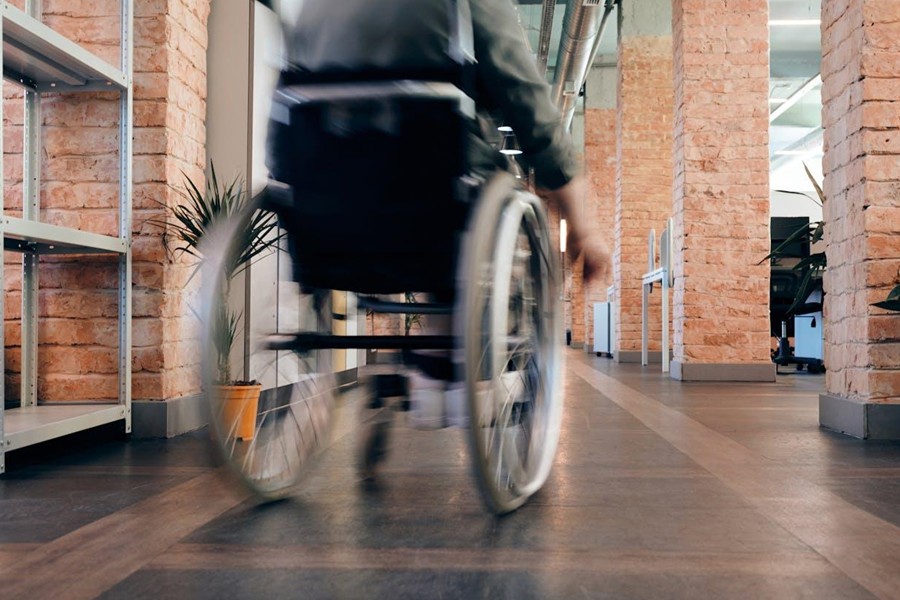 It’s no secret that healthcare workers are struggling with high levels of exhaustion and traumatic stress (thanks, 2020).
It’s no secret that healthcare workers are struggling with high levels of exhaustion and traumatic stress (thanks, 2020).
Now more than ever it’s important for them to try tactics that alleviate anxiety and help them develop resilience.
These exercises from Drs. Mark Goulston and Diana Hendel, coauthors of Why Cope When You Can Heal? will help all healthcare workers relieve stress and avoid burnout. Give these powerful exercises a try today.
Grounding Exercise
Grounding is a great way to reduce anxiety and arrive in the here and now.
Do it morning and evening as a way to begin and end the day. (It’s also a good way to recenter yourself when you feel triggered by upsetting memories or flashbacks.)
When used daily, grounding will help you remain centered, grateful, and in touch with your calling to care for others.
Here is a simple grounding exercise to try.
- Find a comfortable place to sit. A comfortable sofa or chair works best.
- Rest your hands on the arms of the chair or, if the chair has no arms, place them on your legs. Feel the fabric of the chair or your clothing. Notice its color and texture.
- Next, bring your awareness to your body. Stretch your neck from side to side. Relax your shoulders. Tense and relax your calves. Stomp your feet.
- Look around and notice the sights, sounds, and scents around you for a few moments.
- Name fifteen to twenty things you can see. For example, your phone, a lamp, a glass of water, or the carpet.
- As you keep looking around, remind yourself that “The flashback or emotion I felt is in the past. Right now, in this moment, I’m safe.”
Distress Relief Exercise for COVID-Related “Triggers”
This distress relief exercise is a wonderful tool that you can use over and over to recognize your feelings and your reactions to your feelings anytime an upset (no matter how large or small) occurs.
This tool is particularly useful when you feel triggered by anything that reminds you of the traumas of COVID-19, be it the noise of sirens, a COVID-related news story, the memory of a patient who died, etc.
When a trigger occurs, mentally walk yourself through the steps listed below. You can also record your responses in a journal if you wish.
- Date/Time: ________ / _________
- What just happened?
- What did you think when it happened?
- What did you feel when it happened?
- What does it make you want to do now?
- Take a deep breath.
- What would be a better thing to do now?
- Why is that better?
The 12 Words Exercise
This exercise is a powerful tool for tapping into your feelings. It can be done on your own, in therapy with your practitioner, or as part of a group exercise.
If alone, imagine a trusted friend or loved one gently and empathetically guiding you through the exercise.
If in a group, the moderator can lead the exercise by speaking each word to the group, or to a single individual in the group. You don’t have to cover all the words at once.
You can focus on just one or two words, take a break, and start on a new word later.
STEP 1: Read the following words out loud: Anxious, Afraid, Overwhelmed, Fragile, Depressed, Frustrated, Angry, Ashamed, Alone, Lonely, Exhausted, Numb.
STEP 2: Pick one of these words that most captures what you’re feeling when you’re greatly stressed and then focus on it.
STEP 3: Imagine feeling this feeling at its worst.STEP 4: What does this feeling make you want to impulsively do?
STEP 5: Imagine saying what you want to do to a person who loves you, and picture them smiling with love and compassion and saying back to you, “I understand.”
STEP 6: Imagine feeling their love taking some of the pain away.
STEP 7: Imagine them asking you, “What would be a better thing to do?”
Add these exercises to your wellness toolkit today. They will help you maintain good mental and emotional health when you need it most.
Why Cope When You Can Heal?: How Healthcare Heroes of COVID-19 Can Recover from PTSD (Harper Horizon, December 2020, ISBN: 978-0-7852-4462-2, $17.99) is available in bookstores nationwide and from major online booksellers. By Mark Goulston, MD, FAPA and Diana Hendel, PharmD.
Become a Harlem Insider!
By submitting this form, you are consenting to receive marketing emails from: Harlem World Magazine, 2521 1/2 west 42nd street, Los Angeles, CA, 90008, https://www.harlemworldmagazine.com. You can revoke your consent to receive emails at any time by using the SafeUnsubscribe® link, found at the bottom of every email. Emails are serviced by Constant Contact








